Front Brake Caliper Overhaul JL9-J55
Caution: Refer to Brake Fluid Irritant Caution in the Preface section.
Notice: Refer to Brake Fluid Effects on Paint and Electrical Components Notice in the Preface section.
- Remove the front brake caliper from the vehicle. Refer to Front Brake Caliper Replacement.
- Remove the brake caliper pistons from the caliper bore by directing low pressure compressed air into the caliper bore through the fluid inlet hole.
- Using a small wooden or plastic tool, remove the piston dust boot seals from the seal counterbores in the caliper and discard the boot seals.
- Using a small wooden or plastic tool, remove the piston seals from the caliper bores and discard the piston seals.
- Remove the bleeder valve and cap from the caliper.
- Clean the brake caliper piston bores and seal counterbores, and the caliper pistons with denatured alcohol, or equivalent.
- Dry the caliper piston bores and counterbores, and the pistons with non-lubricated, filtered compressed air.
- Inspect the caliper bores for cracks, scoring, pitting, excessive rust, and/or excessive corrosion.
- If light rust or light corrosion are present in the caliper bores, attempt to remove the imperfection with a fine emery paper. If the imperfection cannot be removed, replace the caliper assembly.
- If cracks, scoring, pitting, excessive rust, and/or excessive corrosion are present in the caliper bores, replace the caliper assembly.
- Inspect the caliper pistons for cracks, scoring, and/or damage to the chrome plating. Replace the caliper pistons if any of these conditions exist.
- Lubricate the new piston seals with GM approved brake fluid from a clean, sealed brake fluid container. Refer to Fluid and Lubricant Recommendations.
- Install the lubricated, new piston seals into the caliper bores.
- Install the new piston dust boot seal over the piston.
- Install the caliper pistons into the caliper bores.
- Install the caliper bleed screw.
- Install the caliper bleed screw cap.
- Install the caliper to the vehicle. Refer to Front Brake Caliper Replacement.
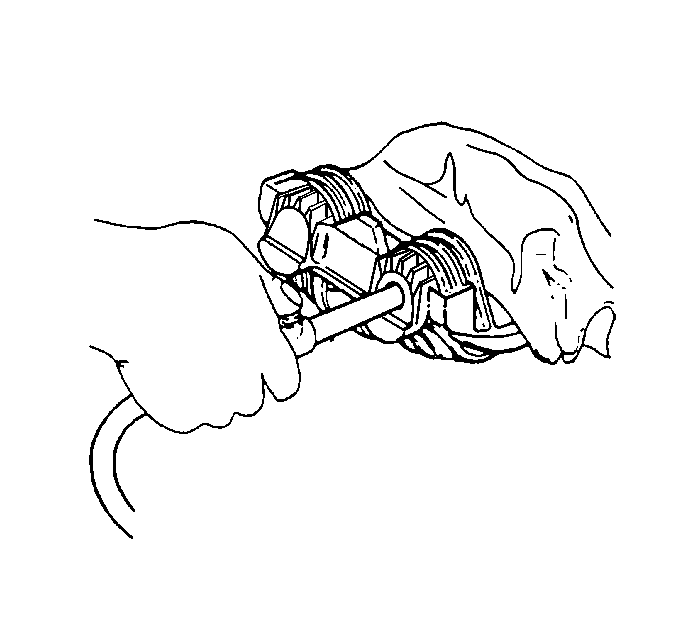
Caution: Do not place your fingers in front of the piston in order to catch or protect the piston while applying compressed air. This could result in serious injury.
Notice: Use clean cloths to pad interior of caliper housing during piston removal. Use just enough air to ease the pistons out of the bores. If the pistons are blown out, even with the padding provided, it may be damaged.
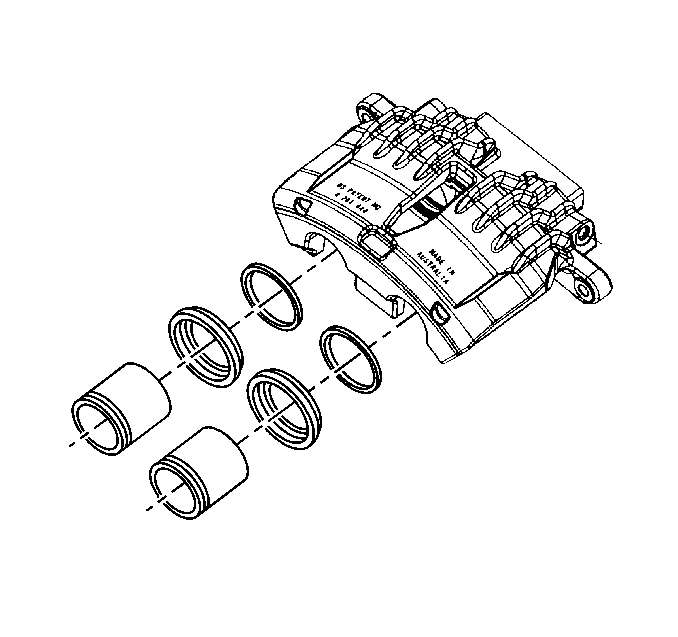
Important: Do not use abrasives to clean the brake caliper pistons.
| 15.1. | Install the boots over the ends of the pistons so that the fold will face toward the brake caliper housing piston bore openings. |
| 15.2. | Seat the boots into the brake caliper bore grooves and slide the pistons into the brake caliper bores. |
| 15.3. | Push the pistons down to the bottom of the brake caliper bores. |
| 15.4. | Make sure the boots are properly seated into the piston grooves and into the groove in the brake caliper bores. |
Notice: Refer to Fastener Notice in the Preface section.
Tighten
Tighten the screw to 12 N·m (106 lb in).
Front Brake Caliper Overhaul J56
Tools Required
CH-47954 Caliper Seal Installer
Removal Procedure
Caution: Refer to Brake Dust Caution in the Preface section.
Caution: Refer to Brake Fluid Irritant Caution in the Preface section.
- Remove the brake caliper from the vehicle. Refer to Front Brake Caliper Replacement.
- Install the caliper in a vise.
- Using the appropriate tools, position the tools between the inner and outer brake pads so that when the compressed air is applied, the pistons will not move.
- Using the C-Clamp from the CH-47954 , hold the brake pad opposite the piston to be removed from the caliper.
- Apply filtered, non lubricated compress air to the piston.
- Remove the piston (1) from caliper.
- After the inboard and outboard pistons have been removed, move to the next piston and repeat the clamping procedure until all pistons have been removed.
- Using a long medium-bladed screwdriver, remove the dust seal (2) from the caliper body. Use caution as not to damage the caliper.
- Using a small flat-bladed pocket screwdriver or equivalent, remove the piston seal (3).
- Remove the brake pipe between the inboard and outboard pistons.
Important: Cap or plug the brake hose so as not to allow the brake system to become contaminated and to prevent fluid leaks.
Important: Use a vise or holding fixture that has soft jaws to prevent damage to the aluminum body of the caliper.
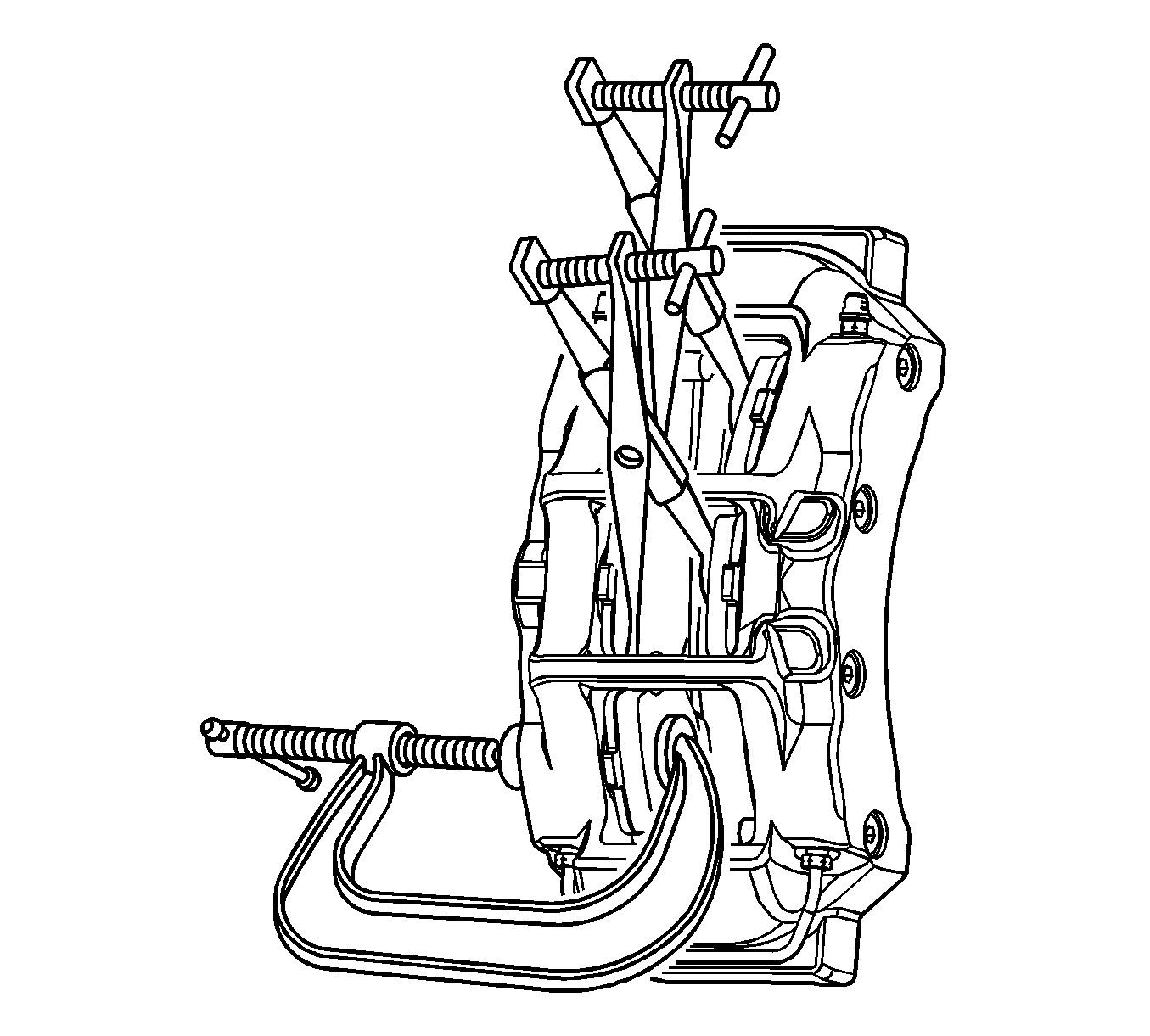
Important: The following service procedure should be repeated until all pistons have been removed from the caliper.
Caution: Refer to Safety Glasses and Compressed Air Caution in the Preface section.
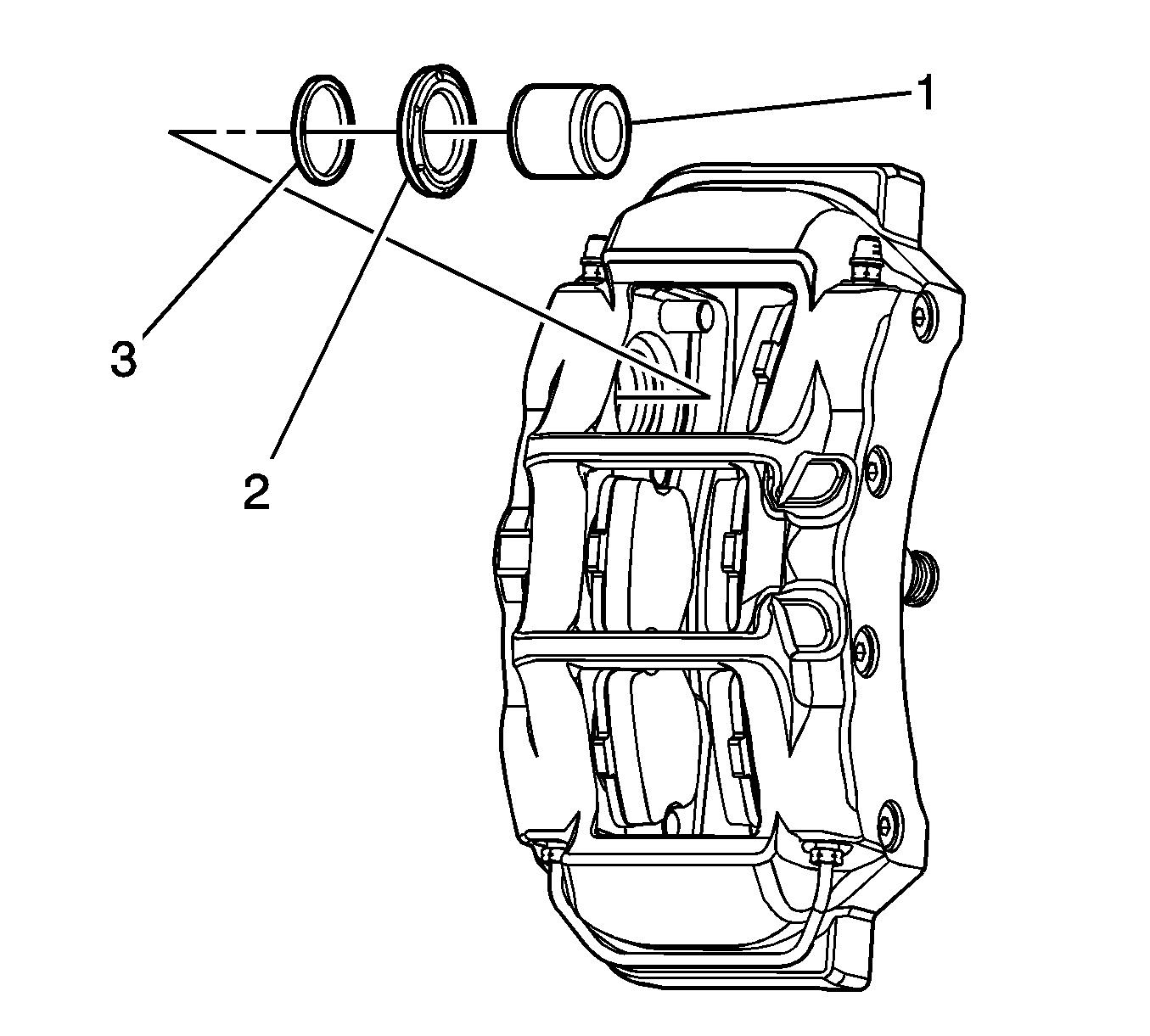
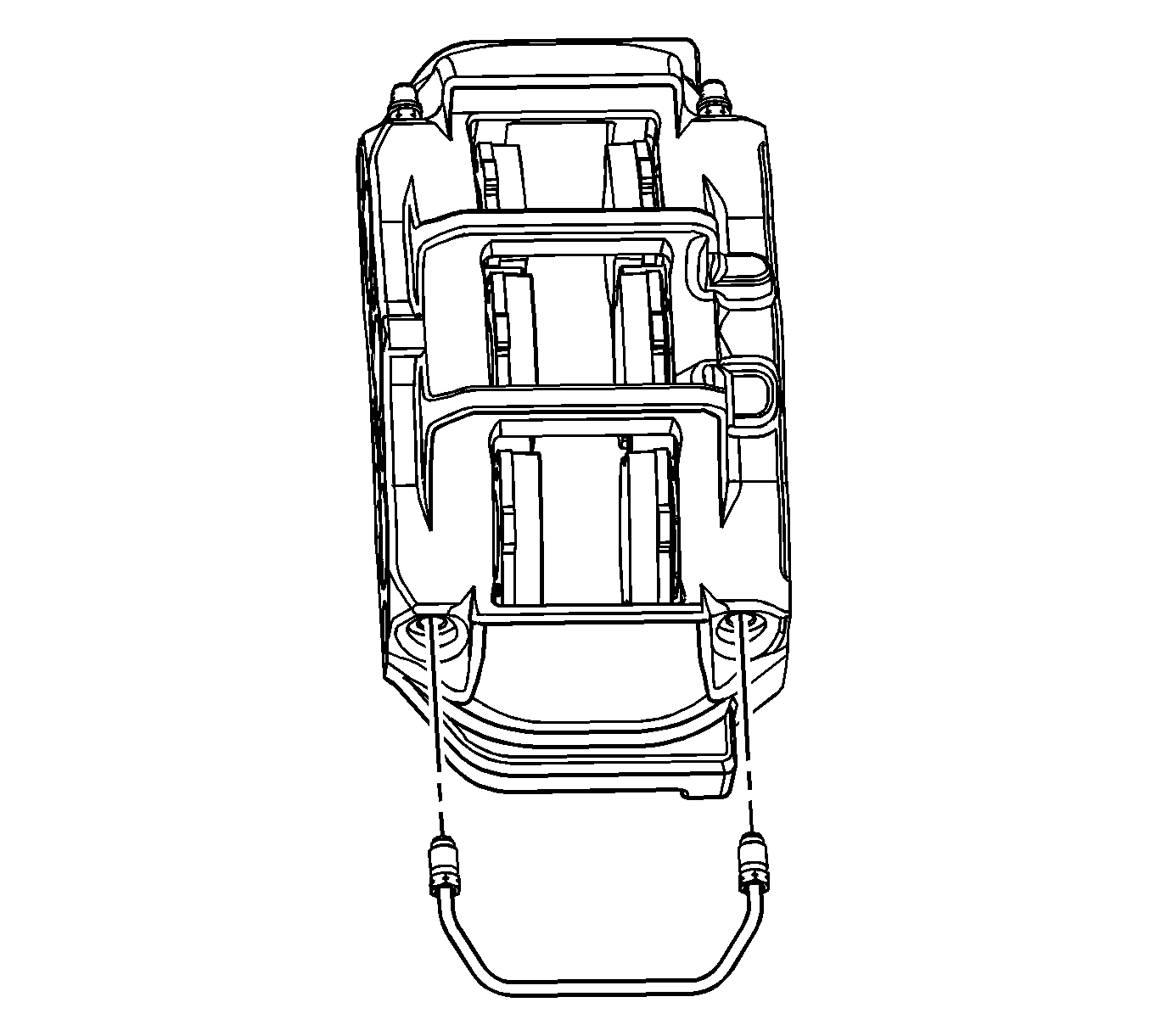
Important: Perform the following service procedure only if the brake pipe is damaged.
Installation Procedure
- Install the brake caliper brake pipe between the inboard and outboard pistons.
- Position the piston seal (3) in the bore.
- Install the piston (1) in the bore.
- Position the dust seal (2) in the piston bore.
- Using the CH-47954 , install the dust seal in the following manner:
- Remove the brake caliper from the vise.
- Using a small flat-bladed pocket screwdriver, install the dust seal in the groove in the piston.
- Install the brake caliper. Refer to Front Brake Caliper Replacement.
- Replace the brake pads if needed. Refer to Front Disc Brake Pads Replacement.
Notice: Refer to Fastener Notice in the Preface section.

Important: Finger tighten the brake pipe before torquing to proper specification.
Tighten
Tighten the fittings to 40 N·m (30 lb ft).
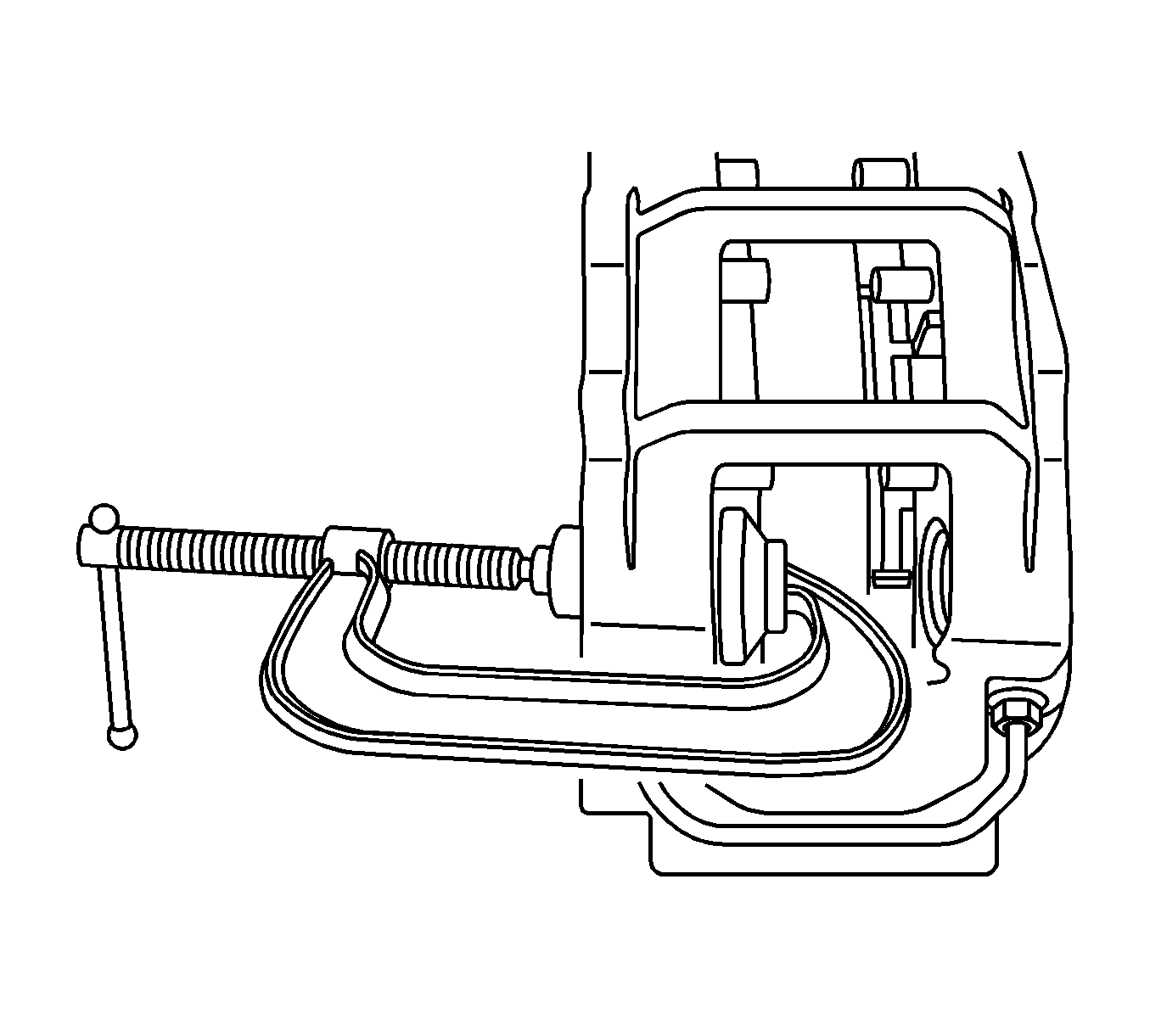
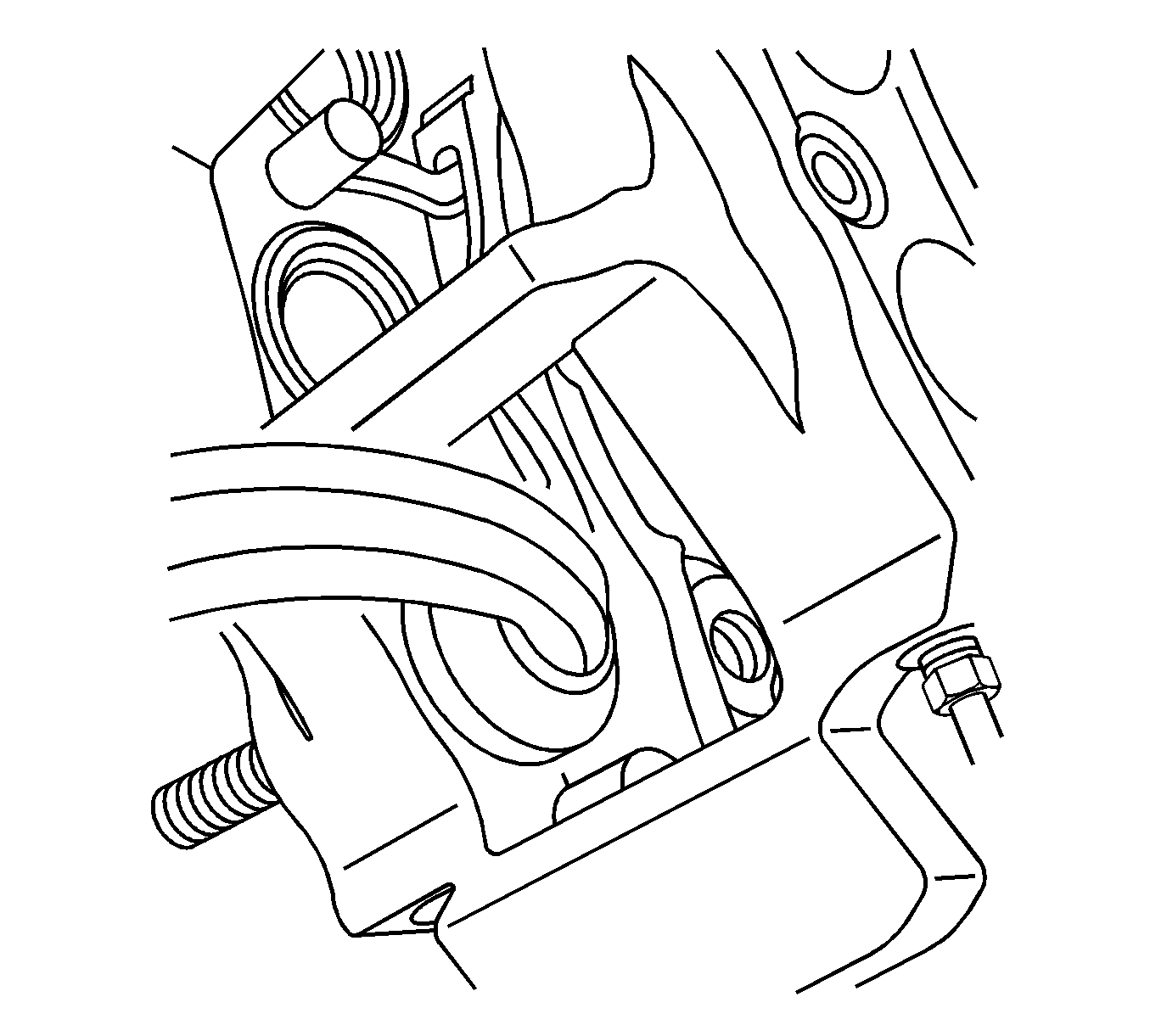
Important: When the dust seal is seated, the dust seal maybe slightly above the surface of the caliper, this is normal. The inner surface of the caliper is slightly curved.
| 5.1. | Position the C-Clamp and cup on the caliper. |
| 5.2. | Align the tool on the dust seal for the proper installation of the dust seal. |
| 5.3. | Slowly apply pressure to the dust seal. |
| 5.4. | Check the alignment of the dust seal to the bore. |
| 5.5. | If the position of the tool and dust seal has changed, reposition the tool on seal. |
| 5.6. | Fully seat the dust seal in the piston bore. |
| 5.7. | Repeat this procedure for the rest of the pistons that need to be serviced. |
Important: In the following service procedure, do not damage the dust seal.
